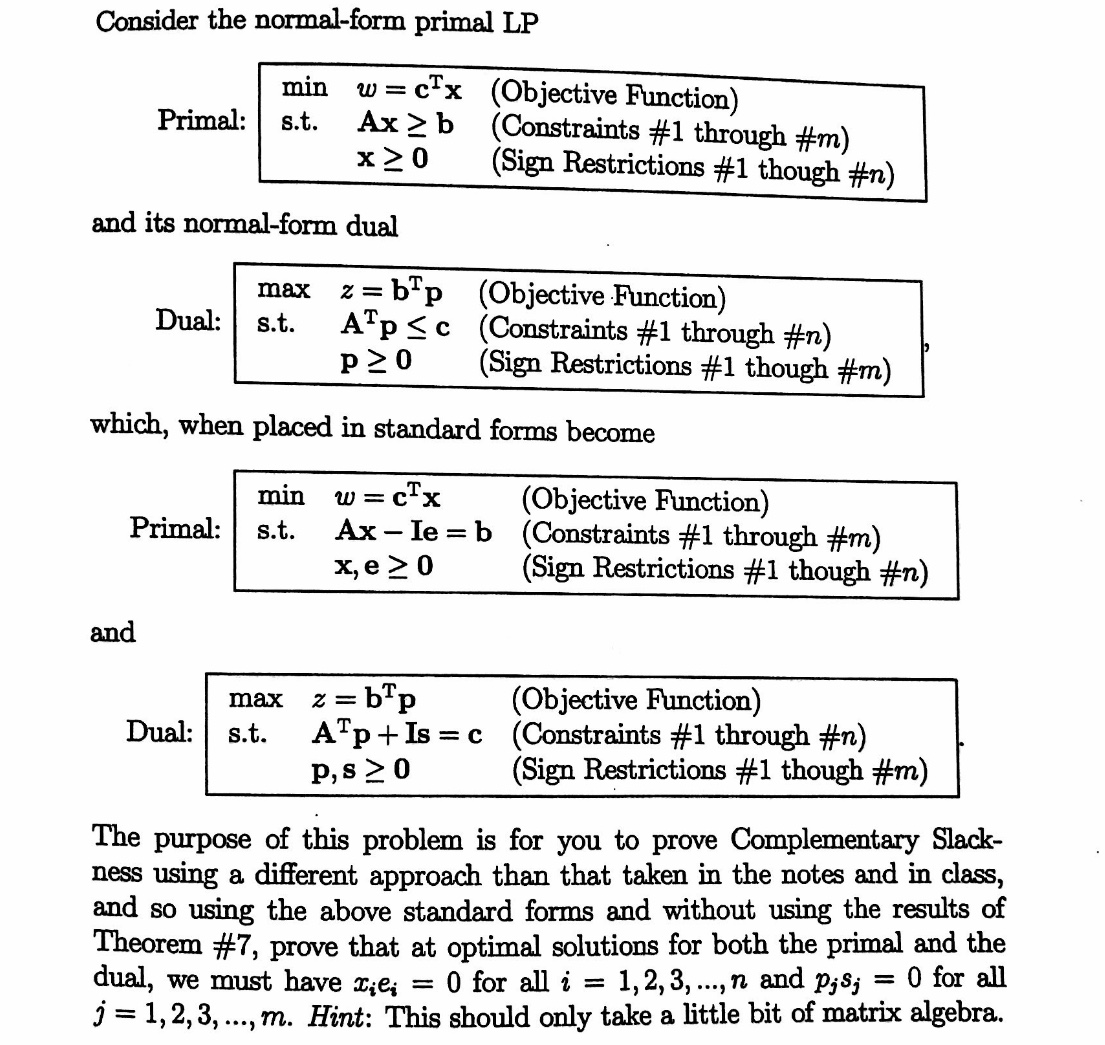Answered step by step
Verified Expert Solution
Question
1 Approved Answer
complementary slackness Consider the normal-form primal LP Primal: min w = c x (Objective Function) s.t. Ax 2 b x 2 0 (Constraints #1 through
complementary slackness

Step by Step Solution
There are 3 Steps involved in it
Step: 1

Get Instant Access to Expert-Tailored Solutions
See step-by-step solutions with expert insights and AI powered tools for academic success
Step: 2

Step: 3

Ace Your Homework with AI
Get the answers you need in no time with our AI-driven, step-by-step assistance
Get Started


